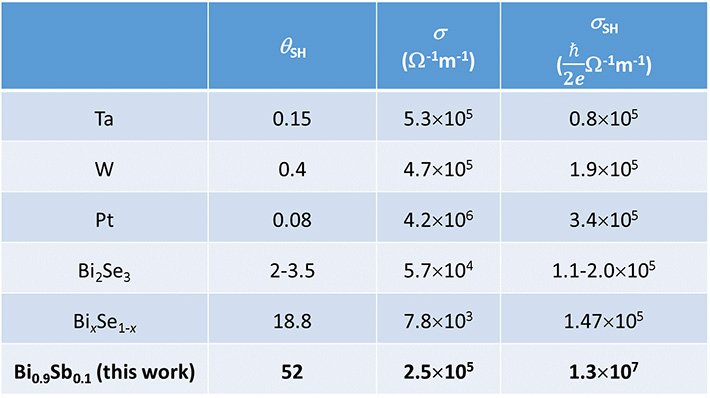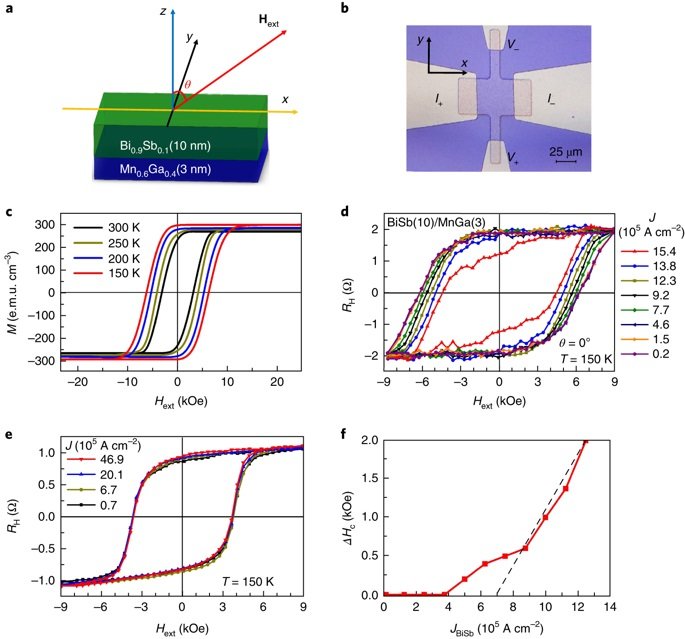As of not long ago, the search for appropriate spin Hall materials for cutting-edge SOT-MRAM devices has been looked with difficulty: First, overwhelming metals, for example, platinum, tantalum, and tungsten have high electrical conductivity, however, a little spin Hall effect. Second, topological insulators explored to date have a substantial spin Hall effect yet low electrical conductivity.
Now, scientists at the Tokyo Tech have devised the world’s best-performing pure spin current source1 made of bismuth–antimony (BiSb) alloys. They have developed thin films of BiSb for a topological insulator that simultaneously achieves a colossal spin Hall effect and high electrical conductivity.
Scientists reported that the films are the best candidate for the industrial application of topological insulators. The films achieve a colossal spin Hall angle of approximately 52, the conductivity of 2.5 × 105 and spin Hall conductivity of 1.3×107 at room temperature. Notably, the spin Hall conductivity is two orders of magnitude greater than that of bismuth selenide (Bi2Se3).

θSH: spin Hall angle, σ: conductivity, σSH: spin Hall conductivity. The figures in the bottom row are those achieved in the present study. Remarkably, the spin Hall conductivity, shown in the right-hand column, is two orders of magnitude greater than the previous record.
Scientists grow these thin film using method called molecular beam epitaxy (MBE) and discovered a particular surface orientation named BiSb(012). This surface tension is a key factor behind the large spin Hall effect.
Scientists think that this achievement could lead to the development of spin-orbit torque magnetoresistive random-access memory (SOT-MRAM) devices.
Pham Nam Hai at the Department of Electrical and Electronic Engineering, Tokyo Institute of Technology (Tokyo Tech) said, “As SOT-MRAM can be switched one order of magnitude faster than STT-MRAM, the switching energy can be reduced by at least two orders of magnitude. Also, the writing speed could be increased 20 times and the bit density increased by a factor of ten.”
This SOT-MRAM is expected to improve its heavy metal-based counterparts and even become competitive with dynamic random access memory (DRAM).
Pham said, “From an electrical engineering perspective, BiSb is very attractive due to its high carrier mobility, which makes it easier to drive a current within the material. We knew that BiSb has many topological surface states, meaning we could expect a much stronger spin Hall effect. That’s why we started studying this material about two years ago.”
“It’s been over ten years since the emergence of topological insulators, but it was not clear whether those materials could be used in realistic devices at room temperature. Our research brings topological insulators to a new level, where they hold great promise for ultra-low power SOT-MRAM.”
The study is reported in Nature Materials.
